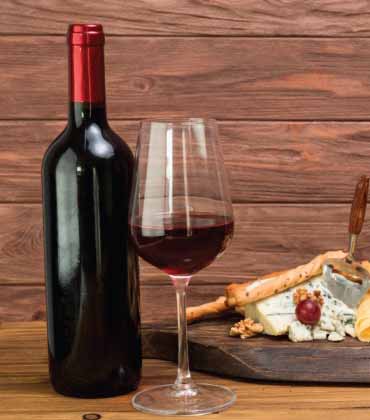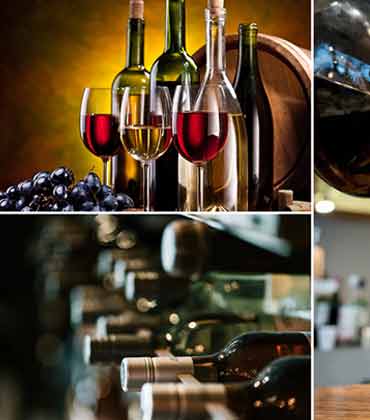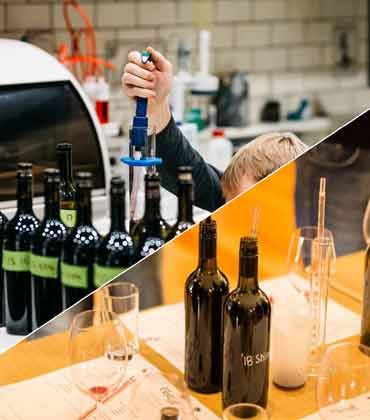THANK YOU FOR SUBSCRIBING
By Angelos Kyrousis, Director of Food and Beverage, Virgin Hotels
Exploring the art of Wine and Food Pairing: A Gateway to...
By Leandro Moretti, Research and Development Director, Marley Spoon
The Rise of Wine Tourism in Europe
By Aoife Murphy, Winery Operations Manager,Glanbia
How European Wineries are Blending Tradition with...
By Riaz Ahamadeen, Vice President of Quality/Food Safety & Regulatory – North America, Oatly
Defending the Plate: Strategies to Combat Foodborne...

Culture and Tradition of Italian Wines
CiroPirone, Director of Italian Wines at Horizon Beverage

 CiroPirone, Director of Italian Wines at Horizon Beverage
CiroPirone, Director of Italian Wines at Horizon BeverageAfter 15+ years in the wine industry and specifically in the business of representing Italian wines/culture in Massachusetts, I wanted to share a bit of my experience.
Growing up in Italy, it is a fact that food, first and foremost, and wine, a bit later, are two of the pillars of our culture and who we are, and especially in Southern Italy, there is an amazing connection between our culinary traditions and obviously many of the great and world-renowned wines of Campania.
Studying hospitality in my hometown, Salerno, and then being able to travel throughout Italy and then England for work experiences opened up my horizons to the broader and quite amazing world of the hospitality industry. After completing my studies and several years of experience in Europe, I finally landed in Boston, Massachusetts, in 1999 and continued my career in hospitality and every day, becoming more fascinated with the world of wines and, more specifically, Italian wines.
Going back 20 years, I embarked on a journey of wine learning that never stopped. I remember that when I first started being more interested in (Italian) wine education, not many courses were available at all here in Boston, but my hunger for learning did not stop me from sourcing every possible book I could find online, and I would order them from both Italian bookstores as well as any others I could find here in the US. Fortunately, during the many years, several great organizations for all folks about Italian wines (and beyond) have become available, such as the Wine Scholar Guild and Vinitaly International Academy (with whom I collaborated in re-writing a section for the second edition of Italian Wine Unplugged), providing a fantastic educational platform and I became certified both as an Italian Wine Scholar as well as an Italian Wine Ambassador.
One certification at a time, I got more and more involved in the Italian wine scene here in Massachusetts, and eventually, in 2007, I started working for a large wholesaler in New England, and my appetite for learning but also educating about Italian wines never stopped.
Today, Italian wines are the most imported here in the US as far as volume, and there is an amazing excitement towards the many varietals (roughly 600 currently registered), types of wines that go from sparkling to whites, rose', red, fortified, and sweet. Italy has always been a touristy country, and many folks travel there to discover the various regions, history, architecture, natural beauty, local foods, and amazing wines. And together with that, Italian restaurants here are ever more popular, with always more and greater ones opening up and pushing the envelope of food and wine. For an Italian wine professional like me, this is truly exciting.
I am fortunate to collaboratewith many restaurants here in Massachusetts, from Boston to the Berkshires, Cape Cod, and the North Shore, and many talented and passionate chefs. I tirelessly work with both restauranteurs and store owners to put together wine dinners as well as wine seminars to showcase the endless possibilities and flavors of Italian wine and food.
Usually, I let the chefs decide the menu, and I pair up the wines based on the theme we are trying to create for the evening; sometimes, I pitch in on the food part just to give a more regional perspective.
"Today Italian wines are the most imported here in the US as far as volume, and there is an amazing excitement towards the many varietals (roughly 600 currently registered), type of wines that go from sparkling to whites, rose', reds, fortified and sweet."
When I pitch a wine dinner to a restaurant, the first thing I build is a theme to create with the wines; it might as well be a regional wine dinner, individual producer, or sparkling wine themed or perhaps wines that represent certain winemaking styles peculiar to certain regions (like appassimento or dehydration process in the Valpolicella area or the MetodoClassico sparklers of Franciacorta and Trento Doc). In Italy, wine and food always go hand in hand, and the regional aspect is a rule of thumb, although the beauty of Italian wines might as well be a delicious Falanghina from Campania, Vermentino from Sardinia’s granitic Gallura area, or Sangiovese from Chianti Classico’s steep hills, or a masterful Nebbiolo from the Langhe, is that they provide and deliver such unique aromas and flavors that can truly match many dishes beyond the regional preparations.
The main thing to keep in mind, in my opinion, is to create and present at each course a unique experience that will make the guests feel like they have traveled to that one specific corner of Italy without leaving the table, telling the story of how the grape variety originated, the name of the wine given by the producer and the unique and special place it came from, might as well be the volcanic vineyards of Etna, the terraced vineyards of Valtellina between the Italian Alps or the lakeshore vineyards of Bardolino on Lago di Garda.
Some of the most fun wine and food pairings, though, have been when chefs decide to create specific dishes that are Italian inspired by classic preparations, such as bolognesesauce orbisteccaallafiorentina, or also spaghetti allacarbonara and pesto allatrapanese, as well as and many others, by incorporating local ingredients from the local New England farms to give it a personal twist.
Ultimately, wine dinners/food pairings have been a fantastic way to expose many consumers to some of the lesser-known Italian varietals, both white; think aboutGrillo from Sicily with a delicious tuna tartare, Marche’s Verdicchio with a seafood soup and Campania’s Fiano di Avellino with a grilled pork chop simply dressed with rosemary and good extra virgin olive oil, and reds like Schiava from Alto-Adige paired up with gnocchi with sage and butter, a bubbly dry Lambrusco from Emilia with a succulent salumi platter or a Primitivo di Manduria of Puglia with a braised pork shank.
I can finish by saying that I have been fortunate to do what I love, living here in the US but still representing my ‘first’ motherland through the stories of wine and food. I am also thankful for all the great chefs and, professionals (retailers), and collaborators in the industry who believe in continually creating new great food and wine experiences for their customers.
Overall, it is a very competitive market because of so many wines from Italy and all over the world available there, but fortunately, Italian producers continue to amaze with their pioneering efforts in continuing to tell the stories one bottle at a time.
Read Also














